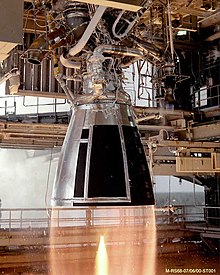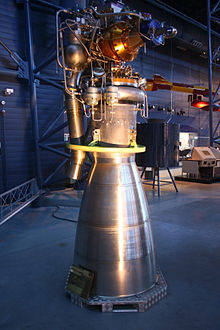
Back محرك صاروخي Arabic Motor cohete AST Ракетен двигател Bulgarian Raketni motor BS Motor de coet Catalan بزوێنەری مووشەک CKB Raketový motor Czech Raketmotor Danish Raketentriebwerk German Motor cohete Spanish


A rocket engine is a reaction engine, producing thrust in accordance with Newton's third law by ejecting reaction mass rearward, usually a high-speed jet of high-temperature gas produced by the combustion of rocket propellants stored inside the rocket. However, non-combusting forms such as cold gas thrusters and nuclear thermal rockets also exist. Rocket vehicles carry their own oxidiser, unlike most combustion engines, so rocket engines can be used in a vacuum, and they can achieve great speed, beyond escape velocity. Vehicles commonly propelled by rocket engines include missiles, artillery shells, ballistic missiles and rockets of any size, from tiny fireworks to man-sized weapons to huge spaceships.
Compared to other types of jet engine, rocket engines are the lightest and have the highest thrust, but are the least propellant-efficient (they have the lowest specific impulse). The ideal exhaust is hydrogen, the lightest of all elements, but chemical rockets produce a mix of heavier species, reducing the exhaust velocity.